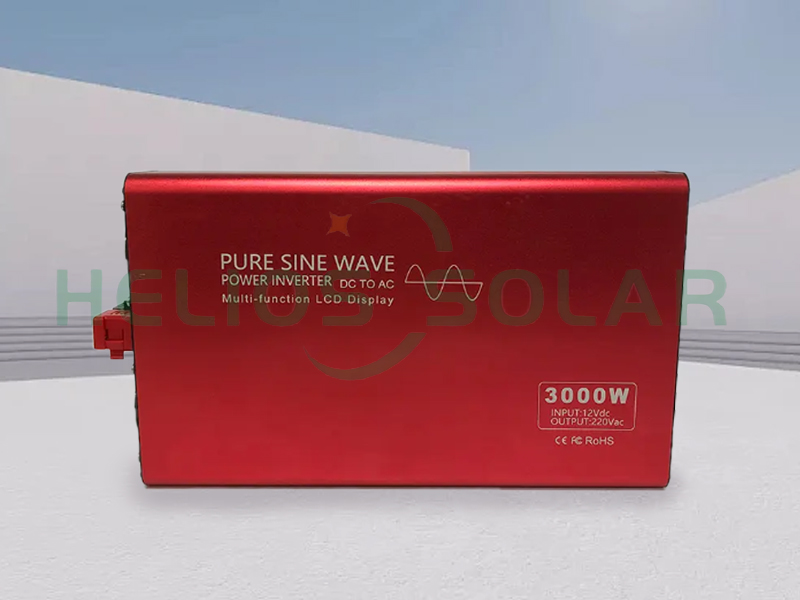In the world of power inverters, the term “pure sine wave inverter” comes up often, especially by those looking for reliable, efficient power solutions for sensitive electronic equipment. But what exactly is a pure sine wave inverter, and how does it differ from a regular inverter? This article delves into the intricacies of these devices, highlighting their differences, advantages, and applications.
What is a pure sine wave inverter?
A pure sine wave inverter is a device that converts direct current (DC) from a source such as a battery or solar panel into alternating current (AC) that closely mimics the smooth sine waveform of grid power. This type of inverter produces clean, stable AC output, which is essential for optimal performance of many electronic devices.
What is a conventional inverter?
The term “conventional inverter” usually refers to a modified sine wave inverter. These inverters also convert DC power to AC power, but use a series of steps to produce a waveform that approximates a sine wave. The resulting output is a rougher, more jagged waveform compared to the smooth curve of a pure sine wave.
Main differences between pure sine wave inverter and conventional inverter
1. Waveform Quality
- Pure Sine Wave Inverter: Produces a smooth, continuous wave that closely matches the alternating current of the grid. This high-quality waveform ensures equipment operates efficiently and without interference.
- Conventional Inverter: Generates a stepped approximation of sine waves that may cause harmonic distortion and electrical noise that may affect the performance and life of connected equipment.
2. Compatibility with devices
- Pure Sine Wave Inverter: Ideal for sensitive electronics such as medical equipment, audio/video systems and devices with microprocessors. These devices require clean power to function properly and avoid damage.
- Regular Inverter: Suitable for less sensitive devices such as simple tools, incandescent lamps and some household appliances. However, they can cause problems in more complex electronic equipment, causing malfunctions or reduced efficiency.
3. Efficiency and Performance
- Pure Sine Wave Inverter: Typically more efficient at converting DC power to AC power, thus reducing energy loss and improving overall performance. They also tend to run cooler and quieter, which is critical in some applications.
- Conventional Inverter: Although generally cheaper, they are less efficient and may produce more heat and noise. This can be a disadvantage in environments where energy efficiency and quiet operation are important.
4. Cost
- Pure Sine Wave Inverter: Typically more expensive due to the complexity of its design and the quality of output it provides. Since sensitive equipment requires reliable and clean power, the higher cost is often justified.
- Regular Inverter: More affordable and easy to use, making it a popular choice for basic power needs where waveform quality is not a critical factor.
Applications and Use Cases
Pure Sine Wave Inverter
- Medical Equipment: Equipment such as CPAP machines and other medical equipment require a stable, clean power source to operate correctly and safely.
- Audio/Video Equipment: Hi-Fi audio systems, TVs and other AV equipment benefit from the clean power provided by pure sine wave inverters, ensuring optimal performance and longevity.
- Computers and Servers: Sensitive electronic devices with microprocessors such as computers and servers require pure sine waves to avoid data corruption and hardware damage.
- Renewable Energy Systems: Solar power systems and other renewable energy installations often use pure sine wave inverters to ensure efficient and reliable energy conversion.
Conventional Inverter
- Basic Home Appliances: Equipment such as fans, lights, and simple kitchen appliances can usually run on a modified sine wave inverter without problems.
- Power Tools: Many power tools are less sensitive to waveform quality and can be run efficiently with regular inverters.
- Recreational Vehicle (RV): For a recreational vehicle’s basic power needs, a conventional inverter can provide a cost-effective solution.
In conclusion
The choice between a pure sine wave inverter and a conventional inverter depends on the specific power needs and sensitivity of the equipment you intend to use. Pure sine wave inverters offer superior waveform quality, efficiency and compatibility with sensitive electronics, making them indispensable in applications where clean power is critical. Conventional inverters, on the other hand, offer a more economical option for less demanding power requirements.
Understanding these differences can help you make an informed decision to ensure your power inverter meets your needs and protects your valuable electronic equipment. Whether you’re powering a complex home theater system, critical medical equipment, or basic home appliances, choosing the right inverter is key to reliable, efficient power conversion.
Welcome to contact pure sine wave inverter supplier Radiance for more information.
Post time: Sep-14-2024


